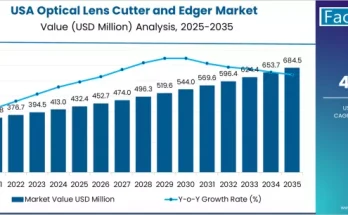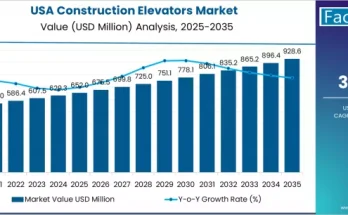The global industrial battery charger market is set for strong and sustained growth over the next decade, expanding from an estimated US$ 2.3 billion in 2023 to nearly US$ 4.5 billion by 2033, according to newly released market intelligence. The report projects a 7% CAGR, driven by rapid modernization of the energy sector, the global shift to electric mobility, and rising investments in digital infrastructure.
Industrial battery chargers have become essential components across industries where energy storage reliability is mission-critical. From utility-scale renewable energy systems to telecom towers and hyperscale data centers, the need for stable, efficient, and safe battery charging solutions has never been higher.
Market Drivers Accelerating Growth
1. Smart Grids & Renewable Energy Integration
Governments and private utilities worldwide continue to modernize conventional grids, creating more resilient and intelligent “smart grid” environments. This shift to digitally managed power networks requires robust battery storage and charging systems to balance fluctuating supply and demand. Industrial battery chargers provide the precise control, efficiency, and reliability needed to keep these storage assets functioning optimally.
2. Rapid Expansion of Electric Vehicle Infrastructure
The global rise of electric vehicles—particularly in public transit systems, logistics fleets, manufacturing, mining, and government sectors—has fueled the need for high-capacity industrial-grade chargers. These chargers support the large battery banks used in EV fleet depots, charging stations, warehouses, and transportation hubs, creating demand well beyond consumer-level EV charging systems.
3. Data Center & Telecom Industry Growth
Mission-critical industries such as data centers, telecom networks, and IT facilities rely heavily on uninterruptible power supply (UPS) systems to avoid service disruptions. Industrial battery chargers are essential for powering these UPS systems and ensuring stable, seamless operations. With global data usage at an all-time high, this segment continues to expand at a rapid pace.
Evolving Technology Landscape
The industrial battery charger market is categorized by technology type, voltage, current output, battery chemistry, and configuration—each contributing to a diverse and competitive ecosystem.
• Ferroresonant Chargers Hold a Dominant Share
Ferroresonant technology accounts for approximately 50% of total market share. These chargers are preferred for their strong resistance to power fluctuations, long service life, and minimal maintenance requirements, especially in harsh industrial or remote environments.
• Rise of Smart and Hybrid Chargers
Smart chargers capable of automatic shutoff, temperature regulation, voltage monitoring, and battery health optimization are gaining popularity. These systems extend battery life and reduce risk of overheating—especially important for lithium-ion and other advanced chemistries.
• Broad Voltage & Current Ranges
Industrial applications require varied power specifications, from 24 V systems to high-voltage chargers exceeding 110 V. Output currents span from 15 A to over 500 A, making the market adaptable for diverse applications including energy storage systems, rail operations, oil and gas, and heavy machinery.
• Compatibility with Multiple Battery Types
Chargers are increasingly designed to support multiple chemistries, including lithium-ion, NiCd, plante, and sealed lead-acid batteries. As industries transition to more advanced energy storage technologies, flexibility is becoming a major differentiator for manufacturers.
Regional Market Outlook
North America currently leads the global market, accounting for roughly 40% of total share. The region benefits from heavy investments in telecom infrastructure, data center expansion, and smart grid deployment. Its strong oil and gas sector and extensive industrial base further strengthen demand.
In Europe, Germany stands out with rising adoption across mining operations, manufacturing facilities, and energy modernization projects.
Asia-Pacific, especially China, remains a fast-growing region due to rapid industrialization, large-scale renewable energy deployment, and the expansion of marine, manufacturing, and export-driven industries that depend on high-quality battery charger systems.
Challenges Hindering Market Acceleration
Despite strong growth prospects, the industrial battery charger market faces several constraints:
• High Initial Investment Costs
Industrial-grade charger systems often involve significant upfront installation costs, limiting adoption among small and mid-sized enterprises.
• Safety Concerns with Low-Quality Chargers
Inferior or incompatible chargers can pose safety risks, particularly for sensitive battery types such as lithium-ion, which require precise thermal and voltage management.
• Supply Chain Volatility
Fluctuations in raw materials and electronic components can constrain manufacturing capacity and extend product lead times.
End-Use Applications Fueling Demand
Adoption is especially strong in:
-
IT & Data Centers – UPS systems, server farms, edge computing hubs
-
Energy & Power Utilities – grid-scale storage, backup systems, renewable integration
-
Rail, Mining & Manufacturing – heavy-duty equipment and remote operations
-
Telecom & Broadband – tower sites, fiber networks, and emergency backup systems
Competitive Landscape
The market features a combination of global manufacturers and specialized industrial suppliers. Key companies include:
-
Hitachi Ltd.
-
EnerSys
-
Exide Technologies
-
Delta Q
-
AMETEK Inc.
-
GS Yuasa Corporation
-
Crown Battery Manufacturing
-
Lester Electrical
These companies are investing in next-generation smart chargers, improved energy efficiency, modular designs, and enhanced safety features to remain competitive.
Future Outlook
Over the next decade, the industrial battery charger market is expected to evolve around:
-
IoT-Enabled Smart Chargers with real-time monitoring
-
Faster Charging Technologies designed for large industrial batteries
-
Modular & Compact Designs to support decentralized energy storage
-
Growing Demand in Emerging Economies driven by electrification and industrial expansion
As industries continue to electrify operations and transition to cleaner energy systems, industrial battery chargers will remain vital to ensuring safe, reliable, and efficient power storage.
Browse Full Report : https://www.factmr.com/report/3758/industrial-battery-charger-market
About the Report
The Industrial Battery Charger Market Report provides detailed analysis of market trends, segment performance, growth drivers, competitive strategies, and long-term forecasts globally and regionally.



